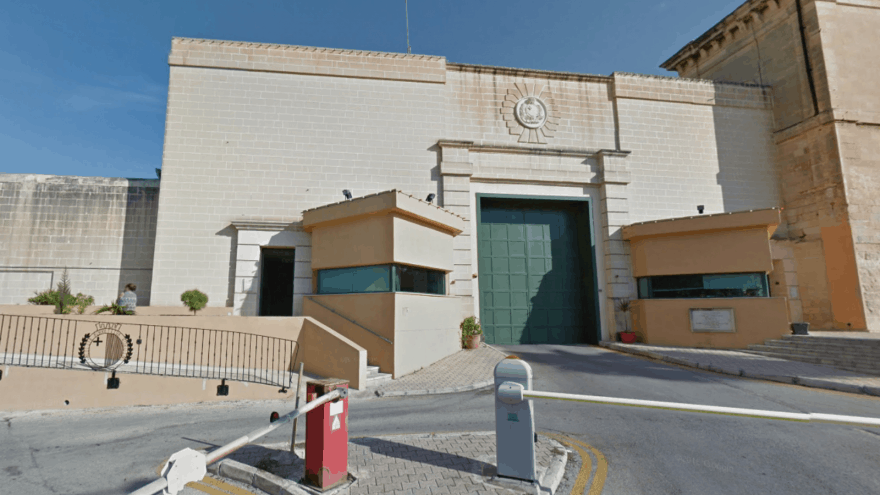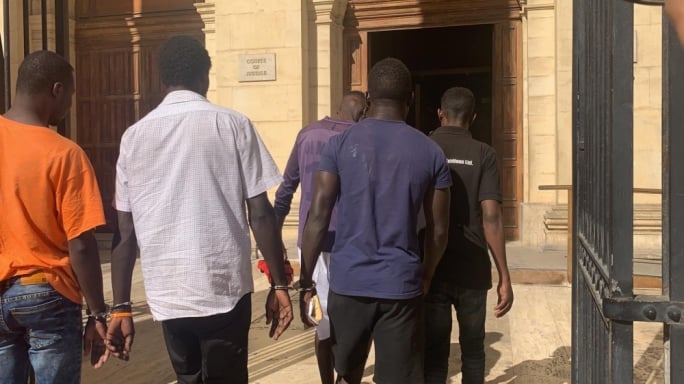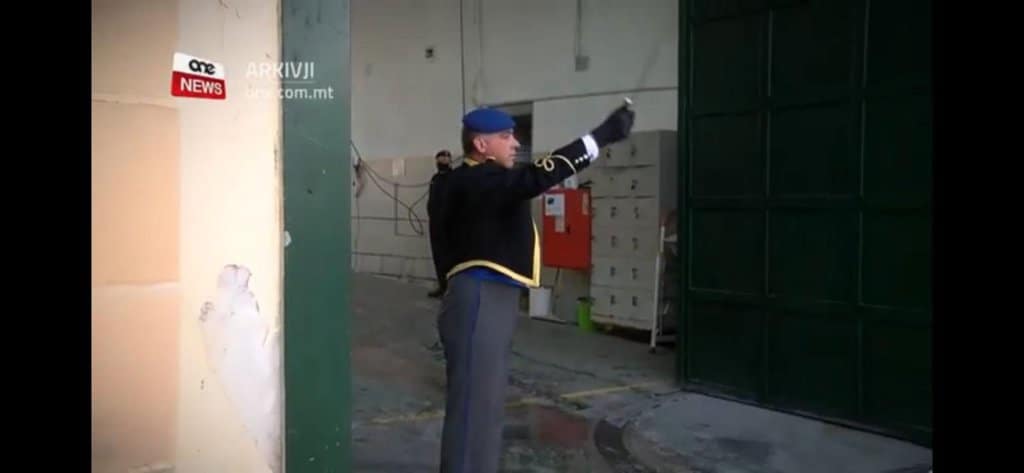
After much struggle and toil, I was given the opportunity to visit the prison and ask its director some questions. It wasn’t easy. I wrote to then minister Michael Farrugia 5 times in November, never getting a proper answer. Then when it looked like the government was floundering, I waited for the change. In February I restarted my letter-writing campaign. I wrote four times to Byron Camilleri and was still being given the run around.
The law is clear. Except for a short list of authorities that must be allowed access to prison on demand, anyone else visiting needs the permission of the minister responsible. I wasn’t getting that.
Why was I asking for this? It didn’t start with the prisons at all. Last October, residents in the Ħal Far detention centre rioted after their complaints about the conditions they were being kept in went unheeded. They were paraded down Republic Street and hauled to court in a chain gang. It looked like something out of Roots.

I asked to see the conditions they were being kept in for myself. Ħal Far residents are not hardened criminals. They were only being kept there in an indefinite limbo after stumbling on our country on their odyssey to a better life somewhere north of here. Why did they riot? What made them do it? Were their claims about inhuman conditions founded in some sort of reality?
There’s a principle in journalism. If you’re just reporting that migrants say it’s raining and the government says it isn’t, you’re not doing your job. Look outside and check for yourself and tell the public what you’ve seen. I wanted to see the conditions migrants were kept in for myself.
But even as I was preparing my request, the rioters were sentenced to serve a sentence in prison. Times of Malta reported they were received in Corradino in another scene out of Roots. They were stripped naked in the courtyard and hosed down in an ignominious spectacle of dehumanisation.
That got me interested in conditions in prison as well and I heard reports of over-crowding and poor conditions for some of the inmates.
This is why I added the prisons to my request. My argument was that detainees and prisoners are entrusted to the state’s care. It is therefore in the public interest to know how these people were being treated by the state, since the state is us and only journalism can provide the right scrutiny for what is happening, quite literally, behind closed and locked doors.
Up to the Covid outbreak, my repeated requests to visit detention centres and prison facilities were ignored. A judicial protest in court was also ignored and left without a reply.
The Covid lockdown increased the gravity of the questions. The Valletta lock-up – deemed by international experts unsuitable even as a waiting hold for the court– was now being used as a permanent prison. Prisoners were left largely incommunicado. And migrant centres became formal prisons as the doors were chained, everyone was kept inside while the perimeter was converted into a military no man’s land.
But in the frenzy of that first Covid spike, insisting on being able to visit the prisons was pointless. I took up the matter again in July, when lockdown conditions had been stood down, and was again being given the run around.
Until a couple of weeks ago, the redoubtable Terry Muscat announced she had been invited to the prison. That meant the door for outsiders had now creaked ajar.
Last Tuesday morning, at 7.47 am, as my lawyer was walking down Republic Street, Valletta with a law suit in his brief case to claim the government was abusing its discretion, denying the right of journalists to scrutinise public institutions and threatening the rights of prisoners by not allowing their conditions to be properly reported on, I got an email from the director of the prison, Alexander Dalli.
He sent me a copy of a “protocol for media visits” to the prison and told me “I can welcome you to visit me in Prison on a mutually agreed date and time.”
The protocol was mostly a PR brochure, several pages long. The part that mattered established 8 pre-conditions for a journalist’s visit to the prison. This is a summary:
- No recordings
- The prison director can only be interviewed in his office
- No mobile phones allowed
- No voice recorders
- Normal screening for all visitors apply
- Journalists will only go where they are taken by the prison authorities
- No journalist will be left unaccompanied by prison officials
- We can throw you out at any time
The rules were clear enough and in most part reasonable. The interview would have to be controlled and notes taken by shorthand, the old-fashioned way. Inconvenient, but there it is.
But it was clear that on the prison tour I would be shown what they wanted me to see, not what I would ask for. The list of grievances about prison conditions that I had accumulated, the overcrowded cells, the overheated punishment sections, the unsanitary conditions in some areas, the exceptional conditions that some might classify as torture: I would have to ask for permission afresh to see those. I wasn’t too optimistic.
But I signed the protocol and made arrangements to visit the prison yesterday afternoon. I would take with me my list of grievances and the specific requests for what I wanted to be shown and see how far that would go.
Later today I will give an account of my visit and my meeting with “Lt. Col. Alexander Dalli Rt’d”, the man I sometimes mockingly described as the Count of Ras Ħanżir.
